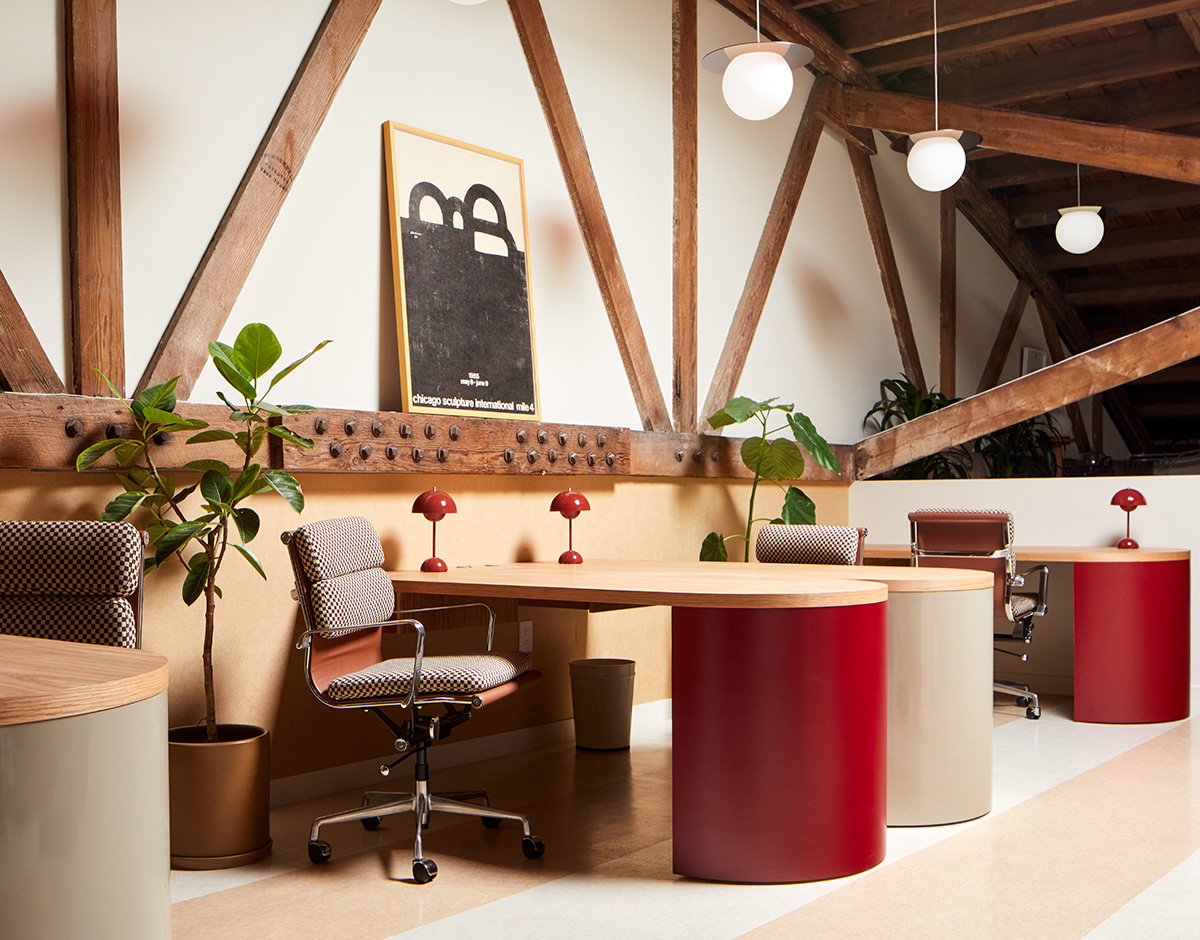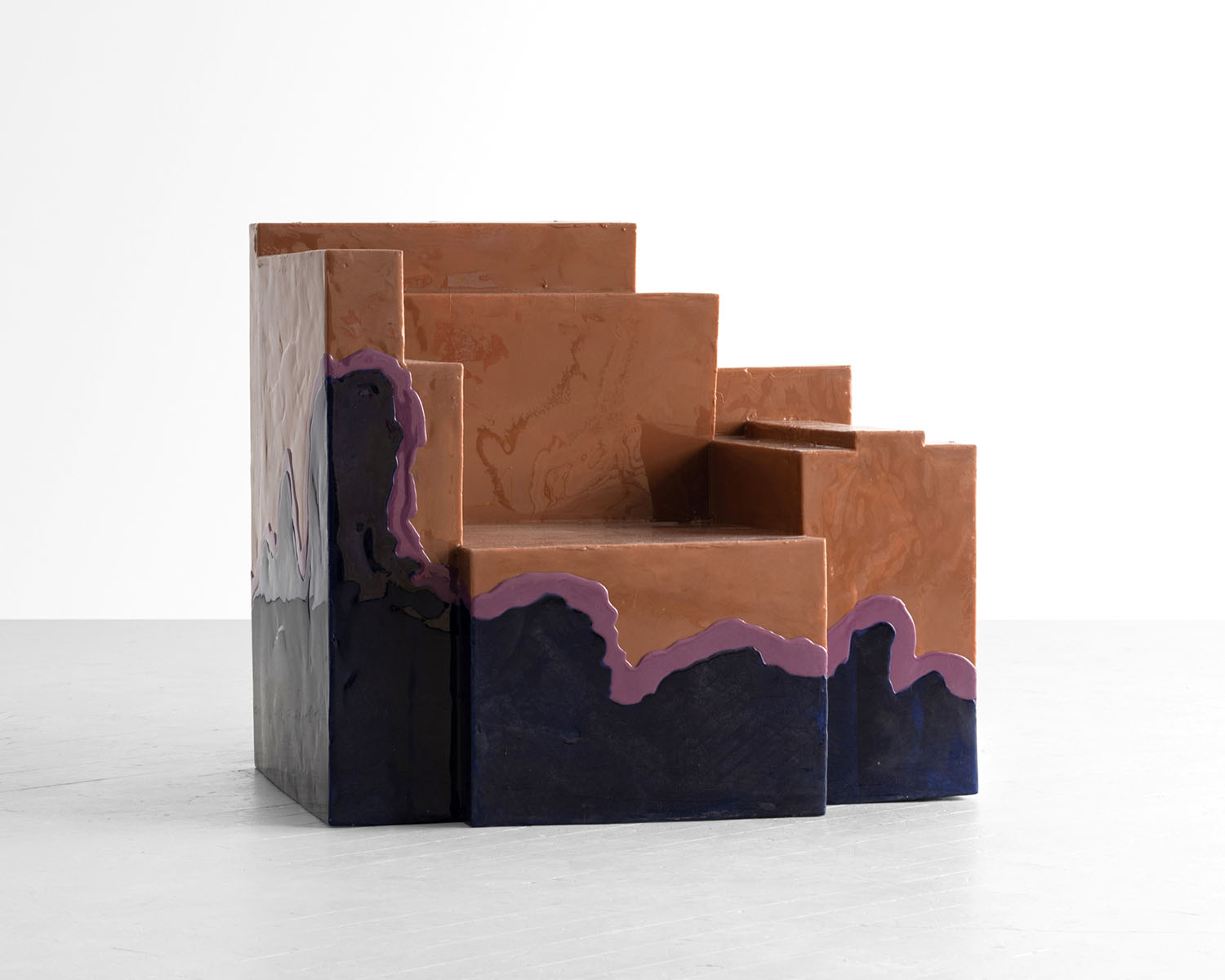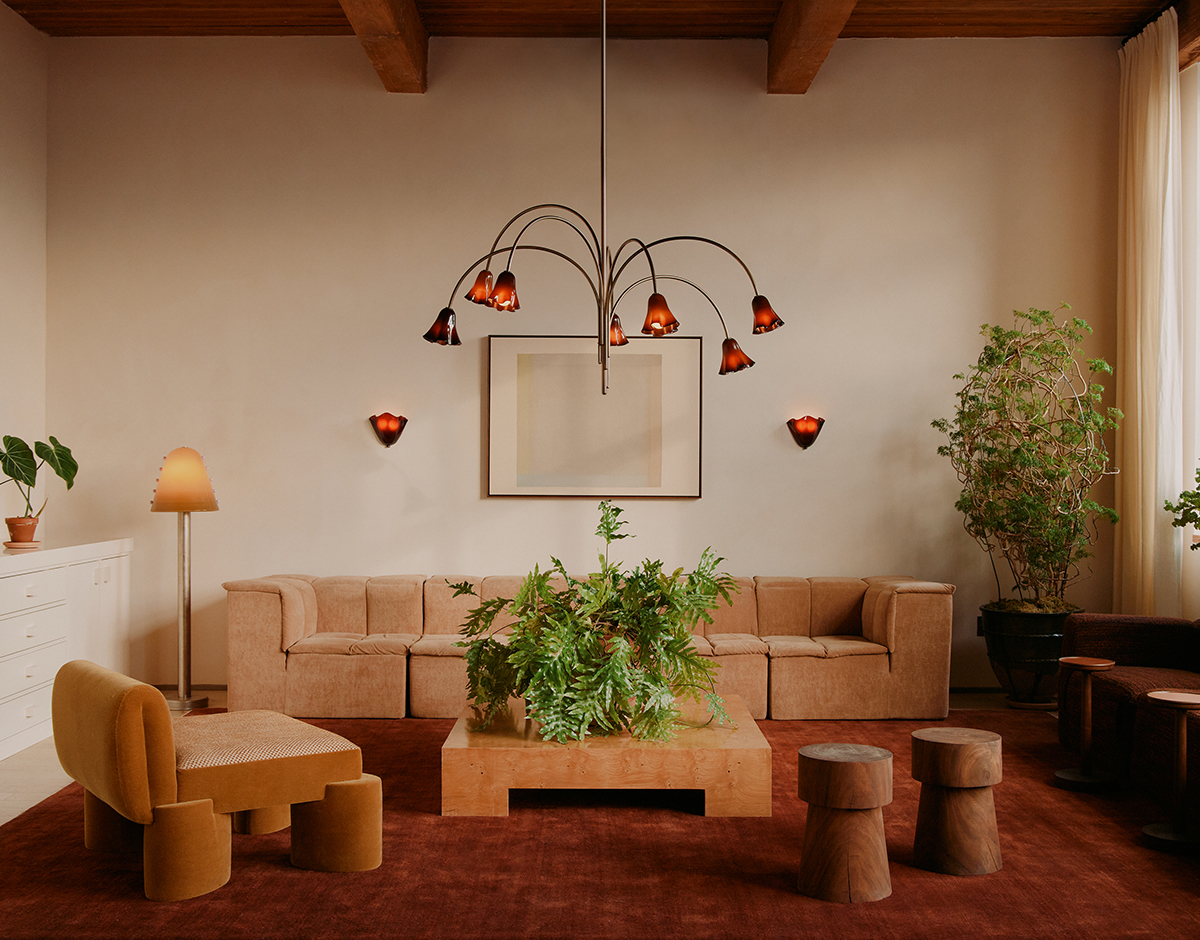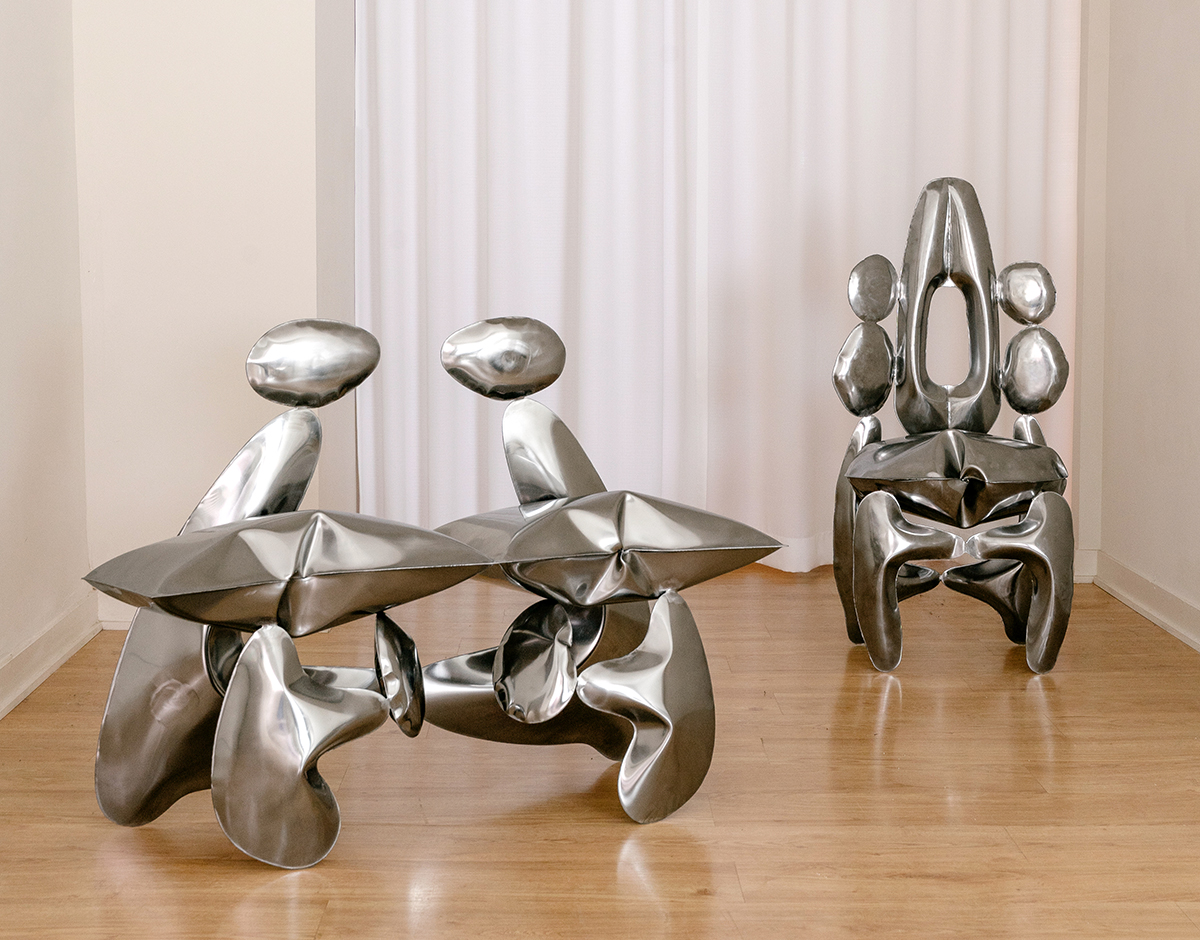
01.08.25
American Design Hot List
The 2024 American Design Hot List, Part III
This week we announced our 12th annual American Design Hot List, Sight Unseen’s editorial award for the names to know now in American design. We’re devoting an entire week to interviews with this year’s honorees — get to know the third group of Hot List designers here (including recent RISD grad Michelle Jiaxin Huang, whose futuristic works in steel are pictured above).
Marquel Williams
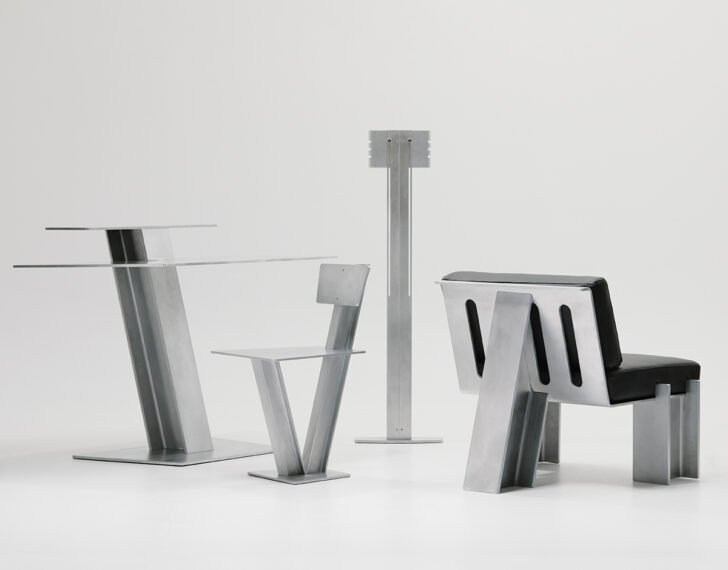
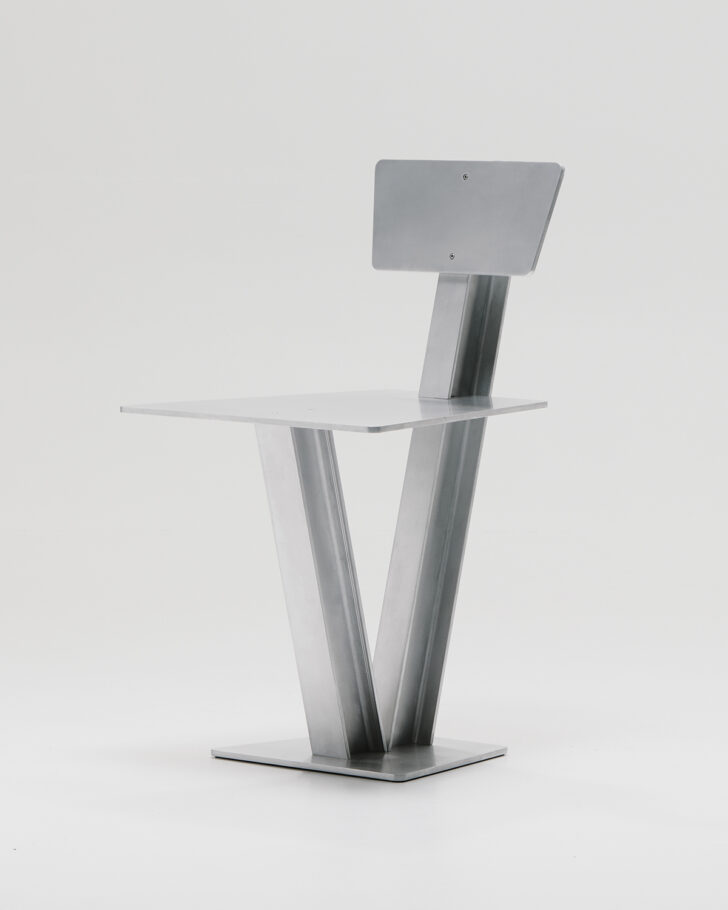
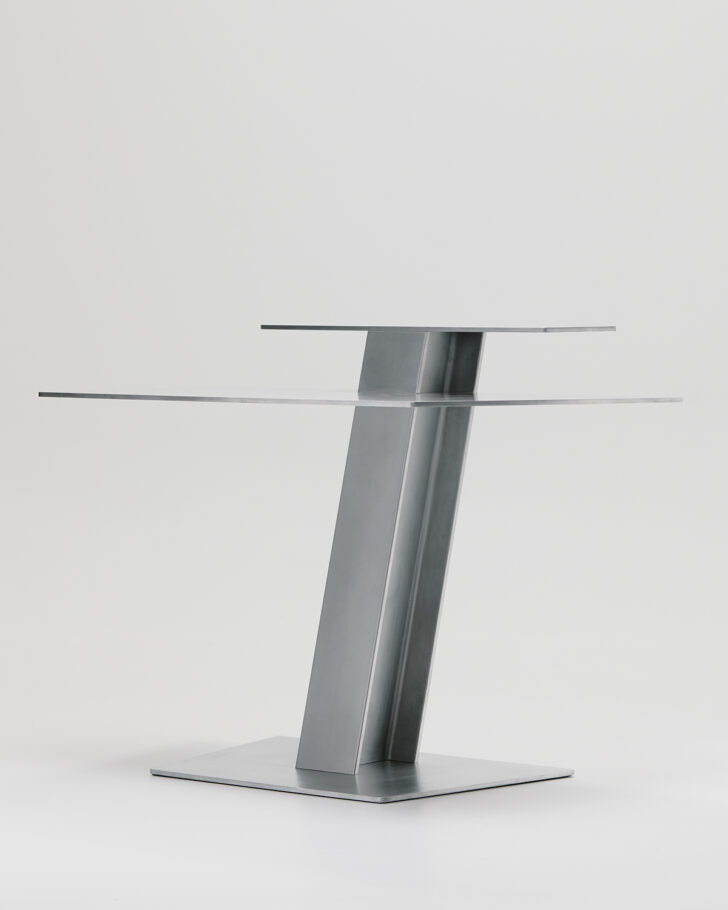

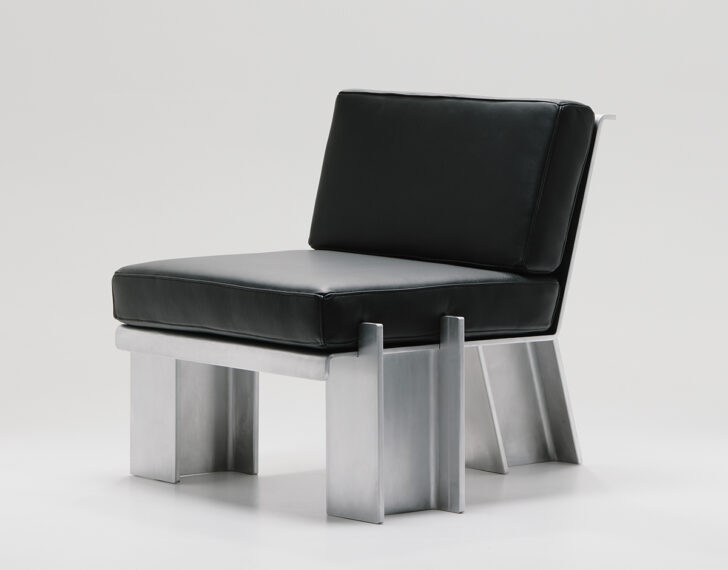
Los Angeles, marquelwilliams.com
We first spotted the work of Marquel Williams at the Collectible Fair in New York this fall, which turned out to be a (partial) debut of his first furniture line: a lamp, desk, and two chairs made from i-beams and aluminum sheets. The pieces are highly utilitarian but with thoughtful, unexpected details like cutouts, cantilevers, and — on the lamp — adjustable-height shades and an interior channel that perfectly frames the spiral power cord inside. Also a model and co-founder of an archival fashion and design store — for which he created his first products, a hanger, tray, and ashtray — Williams is ready to push his new furniture practice further, and we’re keen to see the results.
What is American design to you, and what excites you about it?
There’s an interview with Yohji Yamamoto where he says, “In America, success means fame and money.” I think this sentiment has a certain correlation to design in the US as well. In many ways, the design market in America seems to outpace the country’s collective understanding or appreciation of design itself. America is one of the largest, if not the largest, consumer markets in the world, yet few design movements can be distinctly traced back to the States. Mid-century modernism, for example, became hugely popular here, but its origins lie in Europe. Minimalism, however, is one movement that did originate in America, though it was heavily influenced by the Bauhaus and began primarily as an art movement before spreading into design.
When I think about living American designers who are shaping the design landscape today, not many names come to mind. European and Asian designers often come to mind as global innovators. For international designers, breaking into the American market is often seen as a sign of “making it,” but that seems to speak more to the market’s power than to its creative leadership. I find myself more inspired by American artists and architects than by its designers. Donald Judd, for instance, started as an artist before venturing into design. American design still feels relatively young compared to other parts of the world. Of course, there are icons like Charles and Ray Eames, and the legacy of Herman Miller, but the landscape doesn’t feel as historically deep or defined.
That said, perhaps this newness is what excites me about American design. There’s a lot of potential and opportunity here. Maybe we’re on the cusp of witnessing — or even contributing to — a new movement that could redefine what American design means on a global scale.
What are your plans and highlights for the upcoming year?
I want to take time to isolate myself and deep-dive into learning new techniques, experimenting with more materials, and exploring new ways to work with aluminum — my current material of choice. I aim to release more work, even as I grapple with the inevitable uncertainty about how it will be received. My hope is to have the opportunity to showcase and exhibit this work in galleries and so on.
What inspires or informs your work in general?
It’s hard not to draw inspiration from past designers and their works; architecture, art, sculpture, and movements like the Bauhaus have all had a significant influence on me.
Interestingly, my ex-girlfriends have also influenced my work. While they didn’t teach me technical skills, they played a role in shaping my taste and its development over time. That said, I often feel that the work I’ve shown thus far doesn’t fully represent me or my evolving perspective. By the time a piece is completed and shared, I usually see areas I could have improved — it already feels outdated to me. My goal is to create work that feels timeless, something that maintains its relevance and impact over time.
I also draw inspiration from unexpected places: a misplaced object on the street, discarded furniture, or overlooked materials. There’s truth in the saying, “One man’s trash is another man’s treasure.”
I feel like I’m navigating two minds when it comes to my work. On one hand, I’m drawn to minimalism and simplicity in design; creating objects that are clear in purpose, functional, and easy to interpret. On the other hand, there’s a more artistic and experimental side of me that I haven’t fully expressed yet. This side is less concerned with functionality and more interested in exploring abstract, ambiguous forms and ideas. I’m excited to explore both of these approaches further and see how they might coexist within my work.
Michelle Jiaxin Huang
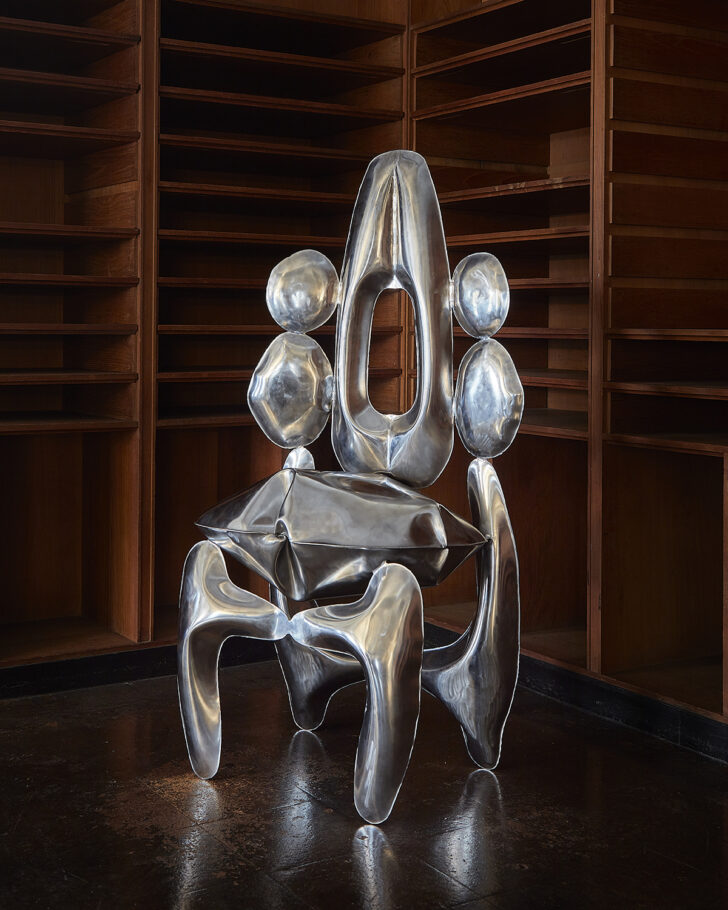

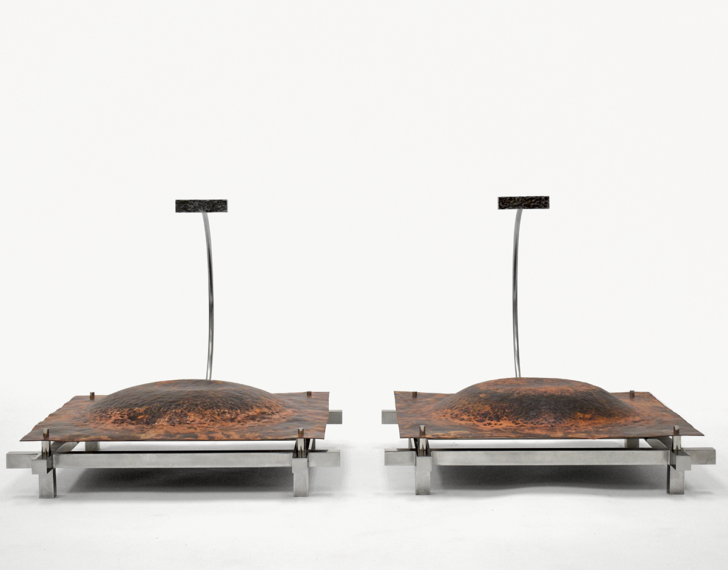
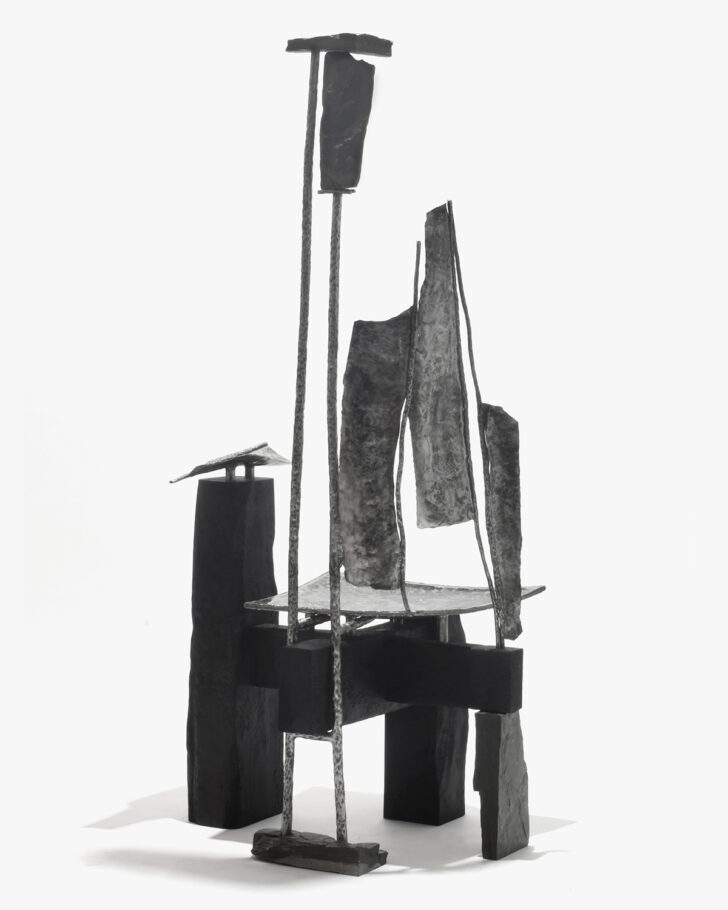
Providence, Rhode Island, michellejxhuang.com
Having graduated from RISD with her furniture design degree just last year, Chinese-Canadian designer Michelle Jiaxin Huang — now working independently in Providence — caught our eye for her very sophisticated, very un-student-y work in steel. It runs the gamut from beautiful Brutalist tables and chairs with an almost mid-century feel to more futuristic, sculptural, and at times inscrutable works. We’re curious to see her next steps as she leans into the more theoretical side of her work, while continuing to innovate in metal.
What is American design to you, and what excites you about it?
I may not be able to definitively articulate what American design is or isn’t, but among its many dimensions, one thread that resonates with me is its ability to transform both narratives and space. It’s this interweaving of mediums, cultures, and philosophies coming together to generate dialogues that transcend the boundaries of design. While American design has never fully turned away from the Modernist emphasis of form, I have noticed an increasing shift towards reimagining the relationship between form and prescribed function — where form is no longer confined to a utilitarian role, but rather embraced as a vessel for narrative and engagement. I think this dynamic is quite fascinating, and reflects a broader cultural attitude of expression and individualism that defines American identity.
What are your plans and highlights for the upcoming year?
I’m currently taking a short break from making and to focus on exploring texts and images. The past year has been pivotal to my design practice, and I’m taking some time to synthesize and research before I start making again. Towards the second half of this year, I found myself moving away from a traditional object-based practice, toward investigating a more theoretical framework around the ontology of design. In this time I hope to find a better understanding of what it means to create, inhabit, and experience the modern landscape. I’m super excited about this journey and can’t wait to see how it will transform my practice.
What inspires or informs your work in general?
Informed by the disappearance of relatable elements in the modern built environment, my practice examines the ways in which world-building and speculative narratives can counteract the alienation of space. Mimicking a process akin to set building, the synthesis of my research takes form in the reconstruction of quotidian objects — chairs, tables, and other instruments of the everyday — serving as approachable conduits for interrogating the forces that define human-spatial experience. A lot of my research is grounded in philosophical inquiries about time, space, and memory, as well as image-based research into both the physical and metaphysical dimensions of metaphor. I am currently reading a few books on architecture theory, and Buckminster Fuller’s And It Came to Pass — Not to Stay.
Nicholas Devlin
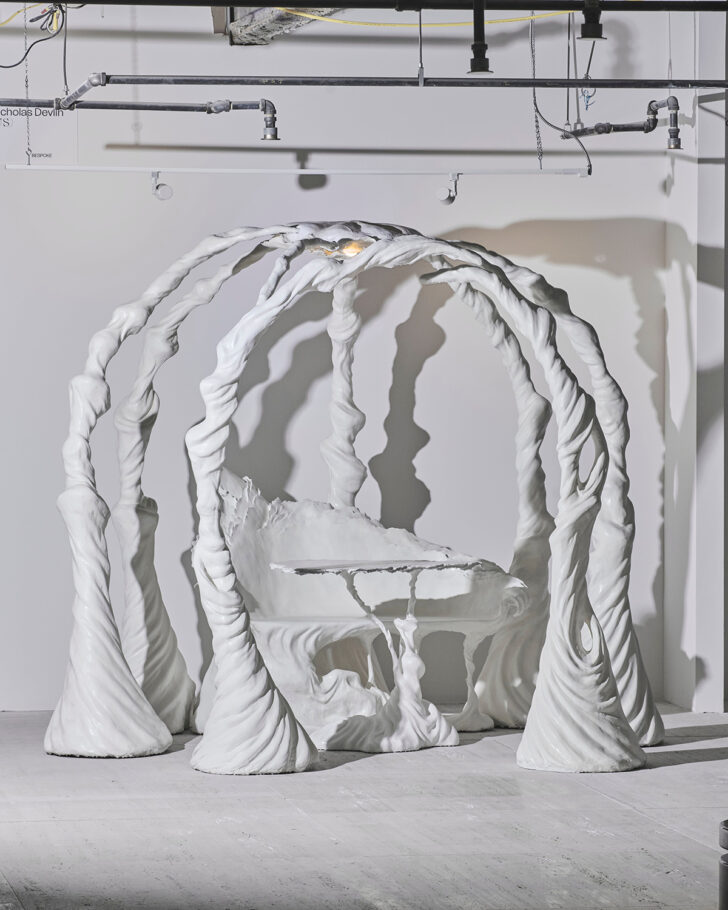
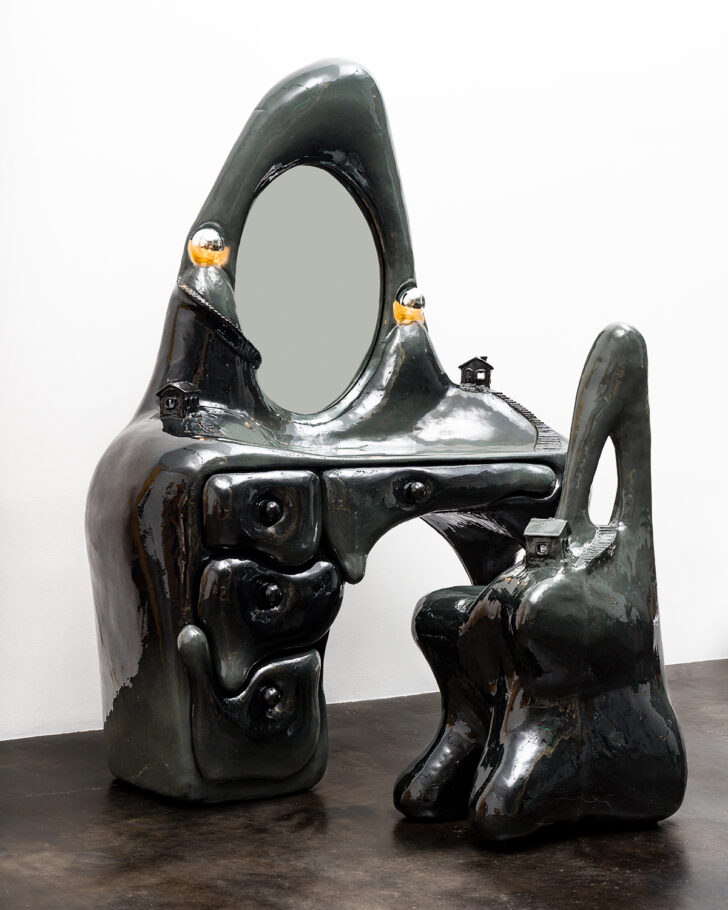
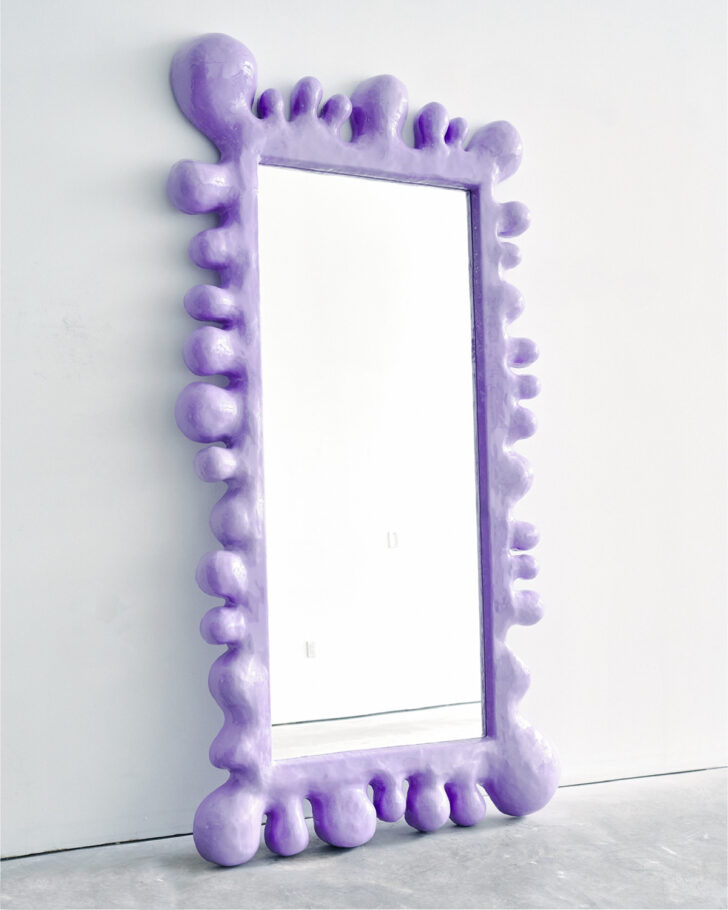
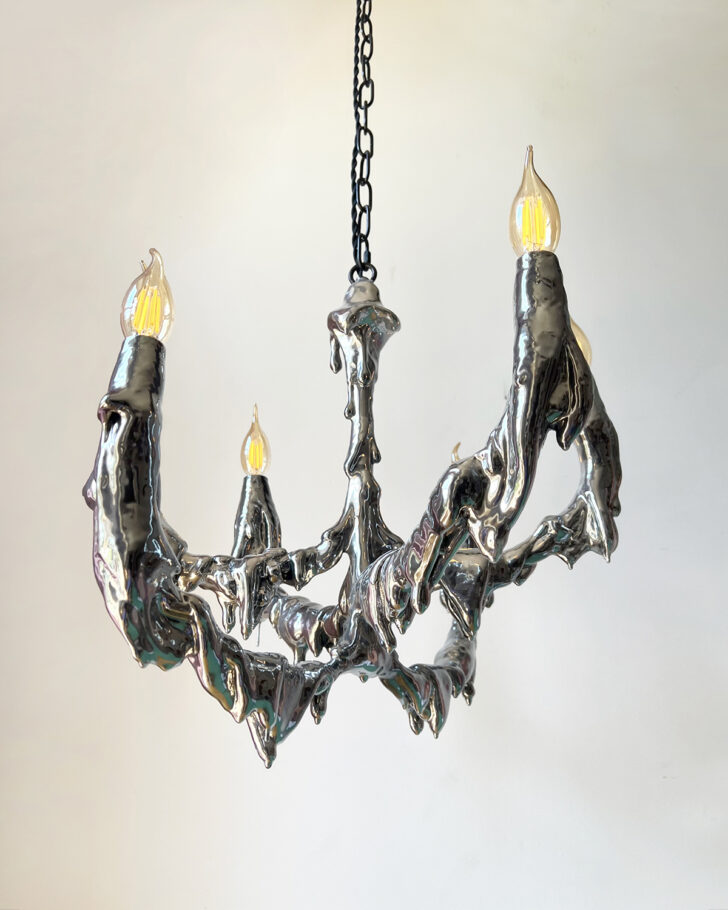
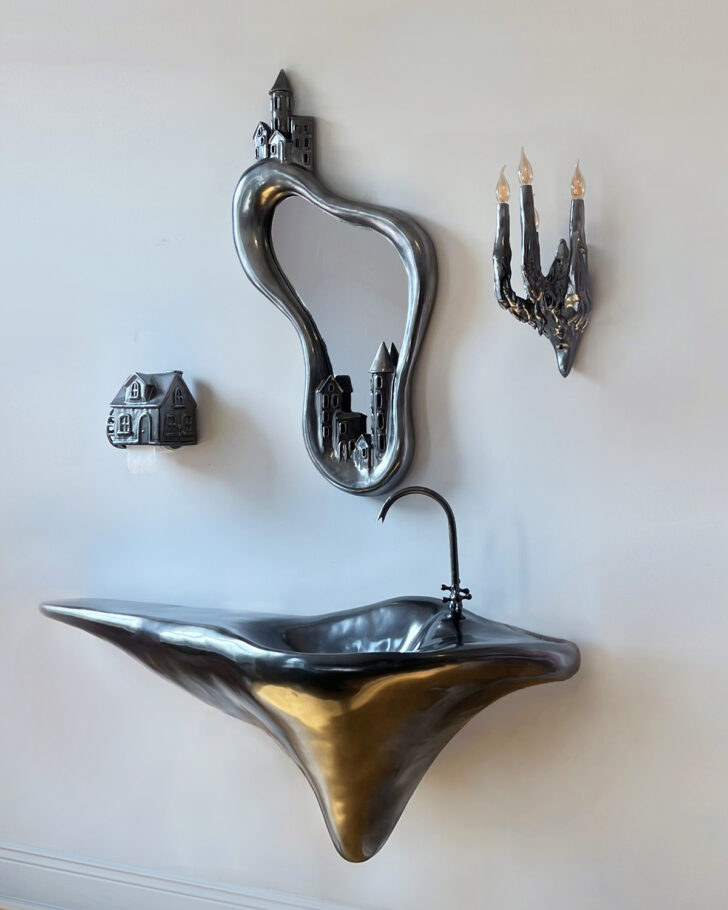
New York, nicholasdevlin.com
There have been certain words tossed around the design world in recent years — gloopy, surreal, whimsical, weird — and while Nicholas Devlin’s work has, at times, embodied each of these terms, there’s simply nothing market-driven about his impulses. Devlin makes tender, authentic work that elicits a kind of spasmodic joy, from the frothy white plaster gazebo he debuted at Collectible this fall, meant to resemble a “giant inhabitable strawberry,” to the slick black vanity above, which sprouts tiny houses, Sarah Sherman meatball–style, and harnesses a memory of sitting on the edge of his mother’s bed watching her get ready for work. Devlin’s work challenges us to rethink our ideas about domesticity, art, nostalgia, and queerness; the fact that his work challenges us at all would be reason enough to be on this list.
What is American design to you, and what excites you about it?
If I’m being honest, I do my best to spend as much time as I can in the rich interior world of my mind. Not in a bad way, though — in an embodied and present sort of way. There’s a caffeinated, commercially considered, and somewhat lobotomized quality to a lot of what I see, so I try to keep that noise out. In a way, American design, to me, is exactly what I’m doing. Could it be that… I am American design?
Maybe it’s the palpably mundane experience of growing up in a generic variety of suburban sameness in Canada — yearning, dreaming, and wishing that every single thing around me didn’t look like that. I’d peer over the fence at the American municipality of New York City and think, “Hey, maybe I should be there. Maybe I could be doing that.” Then I moved here, praying that I, too, might hawk my wares via Instagram and gallery shows, only to be 10k+ in debt within the first three months (not including my student loans).
I have this cinematic memory of standing in my kitchen at 2 AM — yellow-beige Formica countertops, orange-brown wood cabinets, a jarring overhead flush mount above me (now that is American design!) — with a tear rolling down my cheek as I asked myself, “What have I done?” But when I’m not crying and in debt, I really do think it’s amazing that I, and so many others, can come here, pursue this work, and have it be a viable path.
Now, nearly four years later, some things have changed. For example, instead of looking at this incredible list of talent in admiration and, yes, I’ll admit it, covetousness, I get to be on it! That’s so exciting and validating. I dreamed a dream of times gone by…
What are your plans and highlights for the upcoming year?
I don’t like to speak about things before they’re finished, BUT I’m working on some projects I’m very excited about, and there may or may not be a show or two coming up. I really want to spend the year refining my work and the day-to-day parts of my practice. I will also say I am always open to having even more plans and highlights in my life if people would like to give them to me.
What inspires or informs your work in general?
Lately, I’ve found that physically working through one piece often inspires the next. For example, the back of a bench I made was inspired by a surrealist painting of torn paper and fabric. After making that bench, it led to an idea for a mirror I just finished — and I’m quite happy with it. I’ll see something new in the work and try to explore it further. How might I give it more movement? Or make the structure even thinner, so it feels like it’s floating or more delicate than it is? Things like that.
A lot of what I’m drawn to is a particular feeling. I don’t want things to feel too rigid, sterile, or cold. Seeing the hand and an aliveness in the pieces is extremely important to me.
I also tend to think of my work as a sort of covert operation where I get to sneak things I love into places they might not normally go. I imagine all my pieces existing in the same sort of fantasy world, and they usually tie into some aspect of a story or folklore. I get really interested in a specific part of a video game, movie, painting, or book that I love, and I want to draw that thing out and graft it onto a sculpture or functional piece. I don’t think about any of it as design, really, because I’m not interested in finding solutions or solving problems. Instead, they’re art objects that happen to have a function. In my head, they’ve left their world and are here now with us, acting as a sort of poorly disguised mythological house spirit — like a domovoy, hob, or brownie — doing their best to be useful. I like the idea of the work letting someone secretly indulge these nerdier, domestic, kitschy, or romantic concepts in a gallery or exhibition setting. On the outside, hopefully, they look and feel elevated, but there’s also a softness to all of them.
Nicholas Obeid
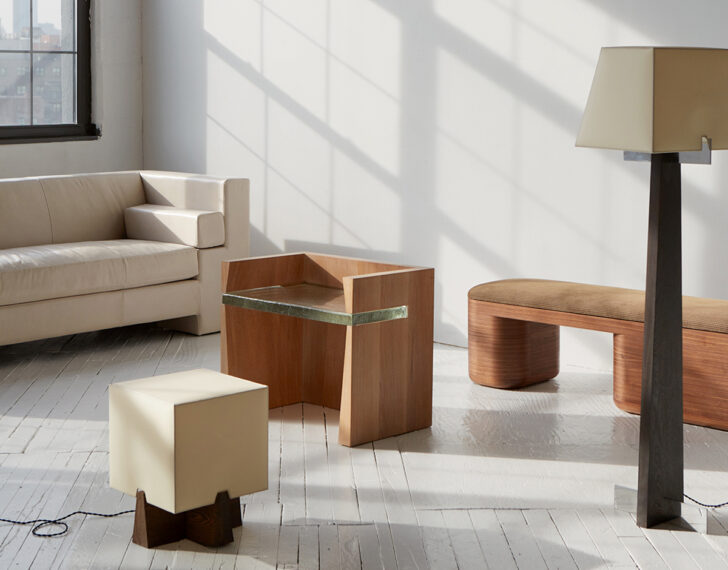
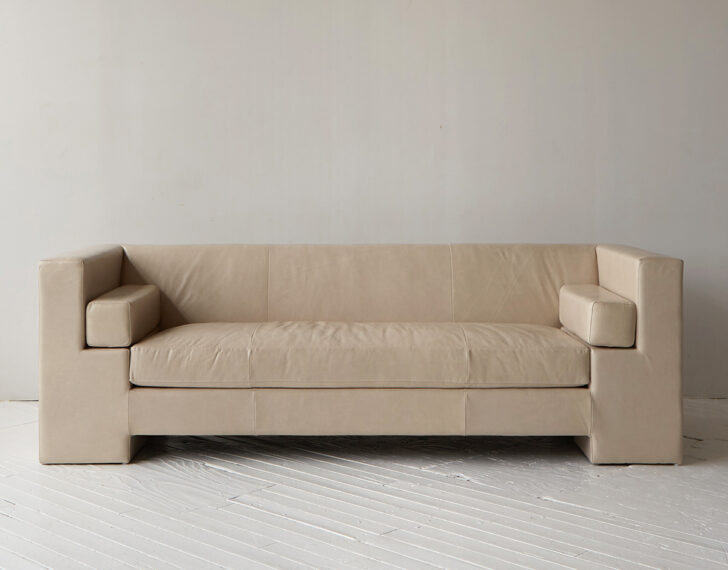
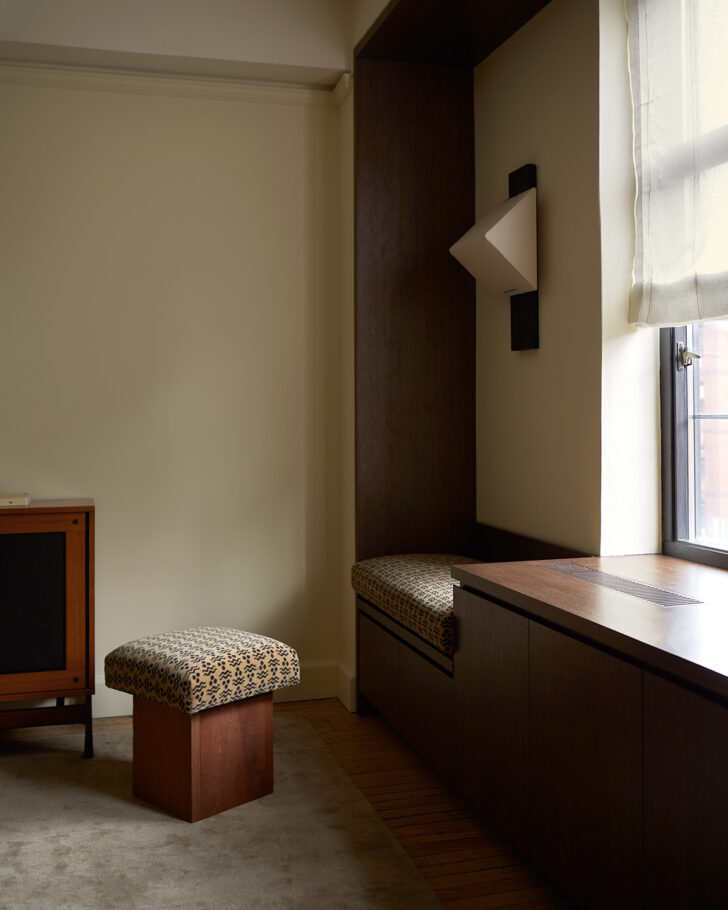
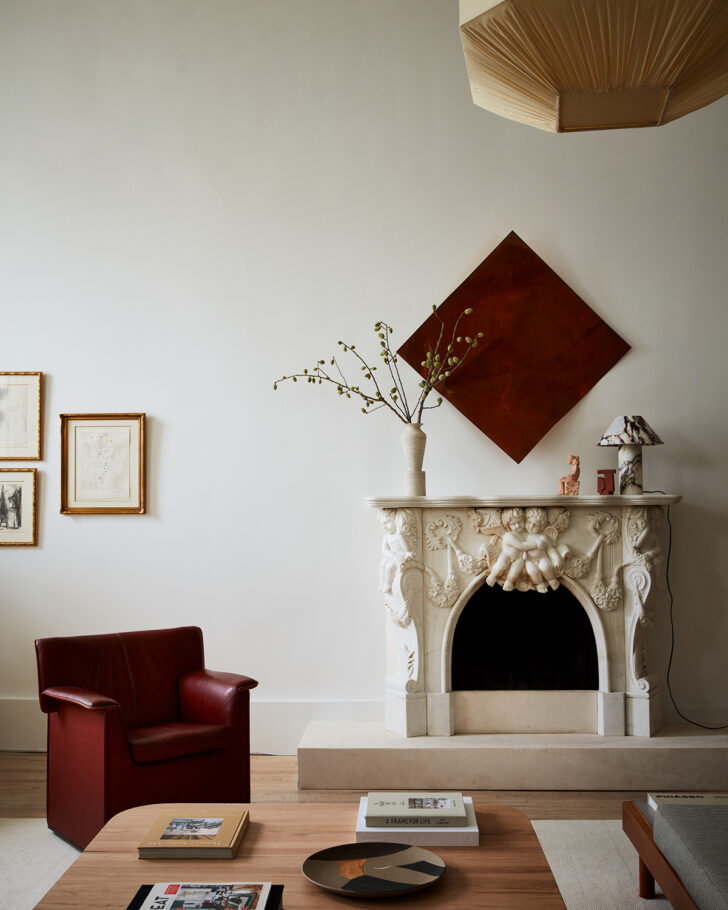
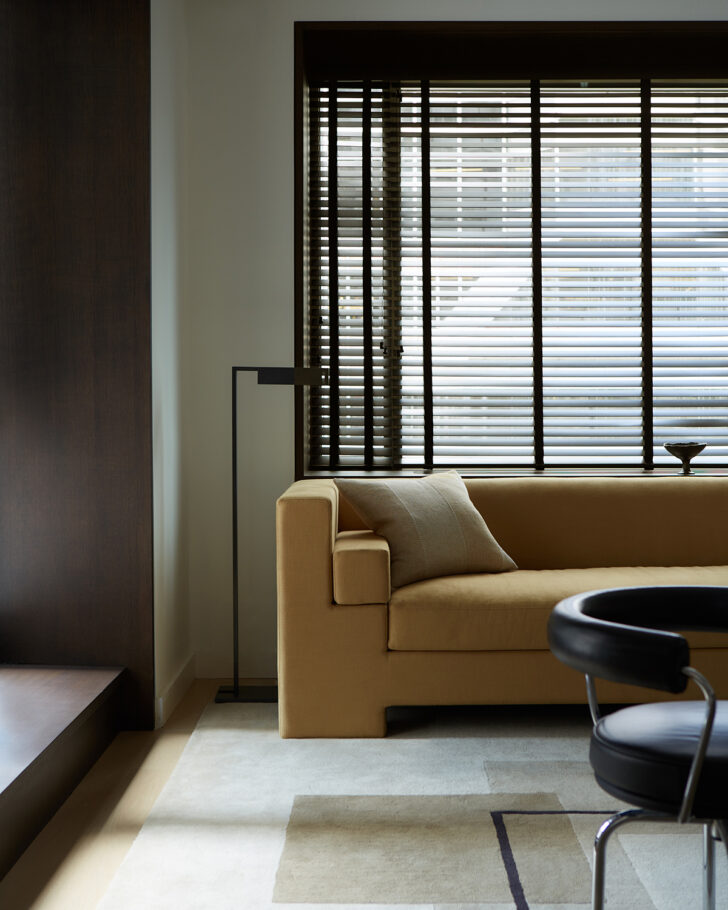
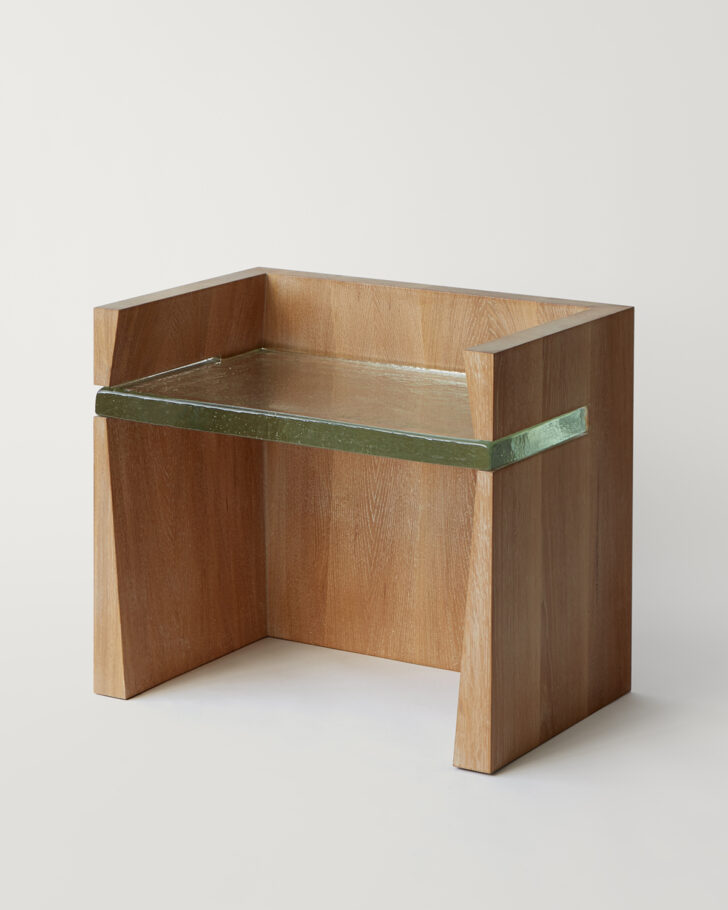
New York City, nicholasobeid.com
We backed into our love of Nicholas Obeid’s work, starting with his first furniture and lighting collection — which launched this past May at Love House in New York — before getting to know on a deeper level the warm, eclectic, often Art Deco–inflected interior design practice he founded in 2018. About that furniture and lighting collection though! Every piece is striking in its architectural simplicity, playing rigid geometries off material softness. And it includes one of the coolest leather sofas we’ve ever seen.
What is American design to you, and what excites you about it?
Cool, comfortable, craftsmanship. American design is an exciting melting pot of global influence and myriad styles, from Deco New York skyscrapers to California Modernism and Ralph Lauren Southwestern in between. It’s young, it’s individual, and at its best, it can be a bit of everything.
What are your plans and highlights for the upcoming year?
A wellness spa and cafe in Greenwich, Connecticut, a loft gut-renovation in Williamsburg, and a Spanish colonial residence in Los Angeles. In 2024, launching my studio’s furniture collection — all made in America from incredible artisans — was a labor of love. In 2025, I’m excited to stock pieces for designers and explore new materials and forms. I’m grateful every day I get to flex so many design muscles.
What inspires or informs your work in general?
In my interior design work, it’s incredible to shift gears to the architectural scope of kitchens and bathrooms. As evident in my furniture collection, which I envisioned as simplistic yet powerfully present, geometry tends to orient me first. Inherently, that informs the material choices based on appropriate application. I’m inspired by the positive feedback I’ve received from designers and architects and am excited to expand the collection. Let me know what you all would love to see!
